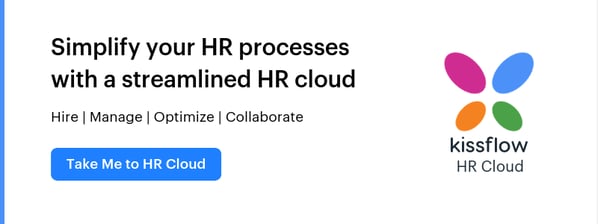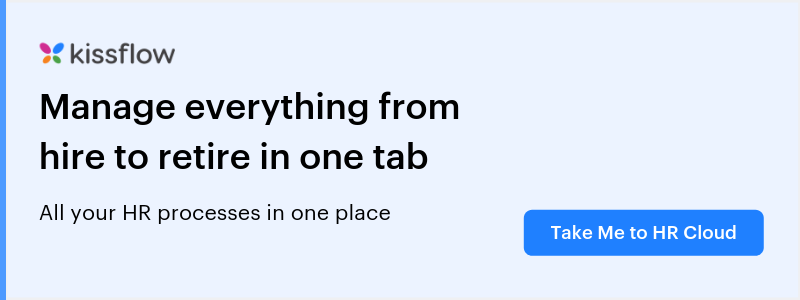In today’s competitive and dynamic recruitment market, top organizations are increasingly chasing the same small group of talented individuals. Thus, your business needs a proactive and forward-thinking recruitment strategy to keep pace. The building of a talent pool is a vital tool to support your business in building the human capital that it needs for its future organizational success.
What is a talent pool and how can it be used?
A talent pool is a group of individuals that are not eligible for a role right now but have the potential to be considered for a position in the future. This could be because there is no current vacancy that suits their skills and experience, they were unsuccessful in a recent application, or simply because the candidate has qualities that an organization can benefit from in the future.
Why should my organization build its own talent pool?
There are a multitude of reasons why using a talent pool can positively support your business to build an effective and responsive recruitment strategy.
First, it is important to recognize that a small percentage of the candidates you are interested in (i.e., the ones with talent) are actively seeking a new role when you have a vacancy. The majority of them are at least willing to have a conversation with you about your organization and what it could offer them in terms of their future career.
It is essential to harness this willingness, so that you can take the first steps of building a fruitful, two-way relationship with potential candidates. You should engage them positively with your company’s values and direction so that they have an interest in working with you in the future.
Building these foundations are crucial to engaging with the best talent ahead of other businesses that are competing for them. Also, having a ready talent pool of well-matched candidates can speed up your recruitment process, as well as improve the quality of hires.
Starting from scratch every time the business approves a new vacancy takes up valuable time that human resources (HR) teams and line managers could put to much better use. Imagine having a list of individuals that have already engaged with the organization at your fingertips to contact whenever a new vacancy arises!
Factors to consider when building your organization’s talent pool
There are a few important things to think about before you get started creating a talent pool for your business. The first is how to best deal with the administration and coordination of the talent pool to ensure that you get the very best from it.
There are plenty of tools on the market that specialize in organizing and managing pools of candidates. Further, most organizations use cloud-based applicant tracking systems, such as the Kissflow HR Cloud, to help them simplify and streamline the process. Manual spreadsheets do not provide the flexibility you need when dealing with a high volume of candidates.
Using applicant tracking or candidate management software is a great way to manage candidates across their entire life span with your organization—from initial interest and building engagement to screening, interview, and ultimately, hire.
It allows you to filter and sort candidates according to their key skills, experience, and competencies, grouping them into potential job matches and suitability for future roles. It is also worth bearing in mind that the size, makeup, and culture of your organization will inevitably impact the type of talent pool you build, as well as how you manage it.
Businesses in industries with lots of varied roles at all levels and high employee turnover rates will benefit most from a comprehensive system to manage a more complex talent pool with a quick turnaround.
A smaller organization, or one that employs individuals in more specialist or high-level roles, would look for a talent pool that can be managed with a focus on key competencies, skills assessments, and building candidate engagement over the longer term.
Simple steps for building and maintaining a talent pool for your organization
Getting started with creating your very own talent pool couldn’t be easier if you follow these tips:
1. Reconsider previous applicants
Vacancies for in-demand roles with good organizations often attract a high number of candidates—and, of course, you end up only hiring one of them.
Even after you have screened and interviewed candidates, you are likely left with a shortlist of applicants who fit the role requirements pretty well. Therefore, it is certainly worth keeping in touch with them and maintaining engagement for future roles.
Remember that you will have done all of the hard work already. As long as the original application was not too long ago to be deemed irrelevant, you probably will not have to start the whole application process from scratch.
2. Don’t neglect your internal talent pool
Maintaining contact and engagement with external candidates is a crucial factor in helping your business to ensure that it can meet its future recruitment needs. It is also equally vital not to neglect the talent that already exists within your organization.
External recruitment can be both expensive and time-consuming, with no guarantee of hiring a candidate that meets your expectations for the role. Internal candidates are already known in the business and therefore have the potential to fill future recruitment gaps efficiently.
What’s more, employees value working for a business that takes the time to understand their future career aspirations and work with them to train, develop, and coach them into more senior roles in the future. This improves your employer brand and employee retention rate along the way.
3. Add to your talent pool using internships and work experience
This can be an effective way to increase the size and quality of your talent pool. Interns and work experience employees have already benefited from some level of the training program, as well as an understanding of the business culture and way of working. As a result, they are more likely to have an interest in and be engaged with the organization, thus making the likelihood of their accepting a future role higher.
From the company’s perspective, the individual is already known to you. Their time in your business is a great opportunity to get to know them better and understand whether they would make a good fit for future roles.
Take the leap from reactive to proactive recruitment
In this new age of recruitment, where candidate engagement is key in such a competitive marketplace, it makes real business sense to invest in recruitment automation that is proactive in nature. This helps build long-term relationships with potential candidates based on mutual trust and interest.
Consequently, this is the only way to ensure your organization is able to meet the demands of its future recruitment needs successfully. Rather than choosing a standalone talent solution, organizations need to look for a unified workforce acquisition suite that provides a real-time view of your talent acquisition process.
All-in-one HR suites like Kissflow HR cloud lets businesses harness the power of technology to better understand the needs of their candidates and keep them engaged. Gone are the days of passive recruitment where you posted jobs and waited for profiles.
Start recruiting pro-actively by creating and nurturing a talent pool of past candidates. Sign up for a free trial and Kissflow HR Cloud and take the leap towards proactive recruitment today.
Related Articles:
- How to Choosing the Best HR Software
- HR Management Software for Your Small Business
- Best Recruitment Tools
- Best HR Tools
- Employee Onboarding Software
- Applicant Tracking Tool


